Rotational Molding
Dailite got its start with the production and sale of Dailite tanks and chemical drums following the introduction of rotational molding technology from Heisler in the USA in 1962. Dailite was the first company in Japan to begin using rotational molding. Since these first years, Dailite has worked to expand upon this technology and has developed its own rotational processing machinery based on in-house designs. Dailite's lineup of rotationally molded products includes some of the largest tanks in Japan with a capacity up to 50,000 liters (50M3) as well as other assorted containers and vessels, industrial equipment, and leisure goods. At Dailite, we deliver quality large-scale products that cannot be recreated using other methods to a wide range of fields and industries.
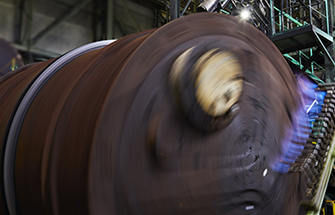
Rotational Molding
Rotational molding is one method for dry powder resin molding where powder thermoplastic resin is put into a metal mold and placed in a heating furnace and rotated 360°. After the resin is evenly melted covering the mold's inner surface, the molten resin is then cooled and hardened to create the final molded product.

Features of Rotational Molding
-
1.Injection molding and blow molding respond to the mold clamping pressure, requiring significant mechanical strength in the metal mold itself. This necessitates high mold production costs when making a product that is large in scale. Rotational molding, by contrast, places no mechanical pressure on the mold itself, making it a much more cost-effective molding method than the others.
-
2. Dlivery time of mold production for rotational molding is much shorter than molds for the other molding methods. In addition, we will offer our proposal of specialized mold to meet the customers' requirement and request because we have various choices to produce a metal mold by way of sheet metal, casting, electroforming, machining processes and combination of such production ways
-
3. Rotational molding is capable of forming largest capacity PE tank of 50,000L which we produced firstly in Japan by our own rotational molding machine technology.
-
4.It is quite easy for rotational molding to change raw materials with the other pigment.With other molding methods, leftover materials are found remaining inside the extrusion and injection molding machinery, making it a time-consuming process to change colors. With rotational molding, however, changing colors can be easily done just by simple cleaning the mold and putting the raw material with the other pigment.
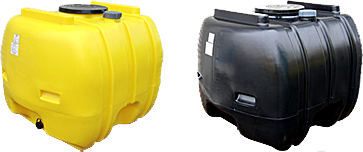
-
5.Rotational molding allows for changing a product's thickness using the same mold. For cases where customers want to maintain the same shape but increase the product's thickness to deliver added strength in meeting an intended application, thickness can be changed simply by adjusting the amount of material added to the mold.

-
6.Blow molding and press molding use techniques that stretch out the original material, which can lead to the product's corners becoming thinner in structure. With rotational molding, however, corners tend to become thicker, leading these stress-prone corner areas to become stronger than those created using other molding methods. This makes rotational molding ideally suited for products such as tanks.
-
7.As injection molding, blow molding, and press molding all apply pressure to the resin during forming, there is a tendency for residual stress to build up internally on products molded using these methods. With rotational molding, by contrast, the resin is gradually layered on the internal surface of the mold, adding no pressure to the resin itself. This leaves less residual internal stress in the products as compared to other methods, lowering the risks for stress cracks to occur in the final product.
-
8.Rotational molding also supports the formation of complex shapes as the images below. (Note: Depending on the limitations imposed by the mold construction, some shapes and forms may not be possible to recreate. Please contact us directly for inquiries on whether a shape for a particular product is possible or not.)
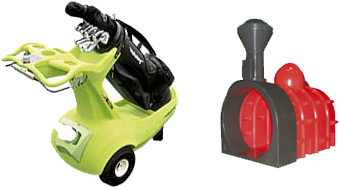
-
9.Rotational molding even supports insert molding for metal components directly on the product. Metal nuts, screws, and other such types of parts can be equiped simultaneously during rotomolding.
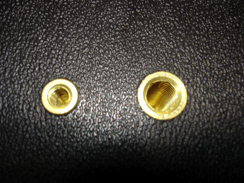
Examples of nut inserts.
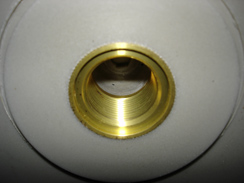
Example of a internal thread insert used in piping.
-
10.Post-processing is also possible. Nozzles and lifting lugs can be attached through welding or heat fusion.
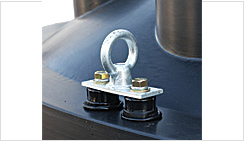
Lifting Lugs
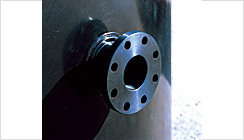
Heat Fusion Nozzle
-
11.By adding a urethane foam to the inside of a rotationally molded product, it is possible to impart thermal insulation properties on the product as seen in our cooler boxes.
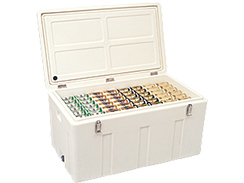
Cooler box
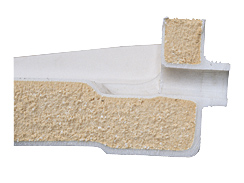
Cross-sectional view
-
12.Rotational molding allows for small-lot production for order sizes not possible with conventional injection molding and blow molding. Minimal lot sizes differ according to each product's size and shape, so please contact us for further details.
Related Topics
